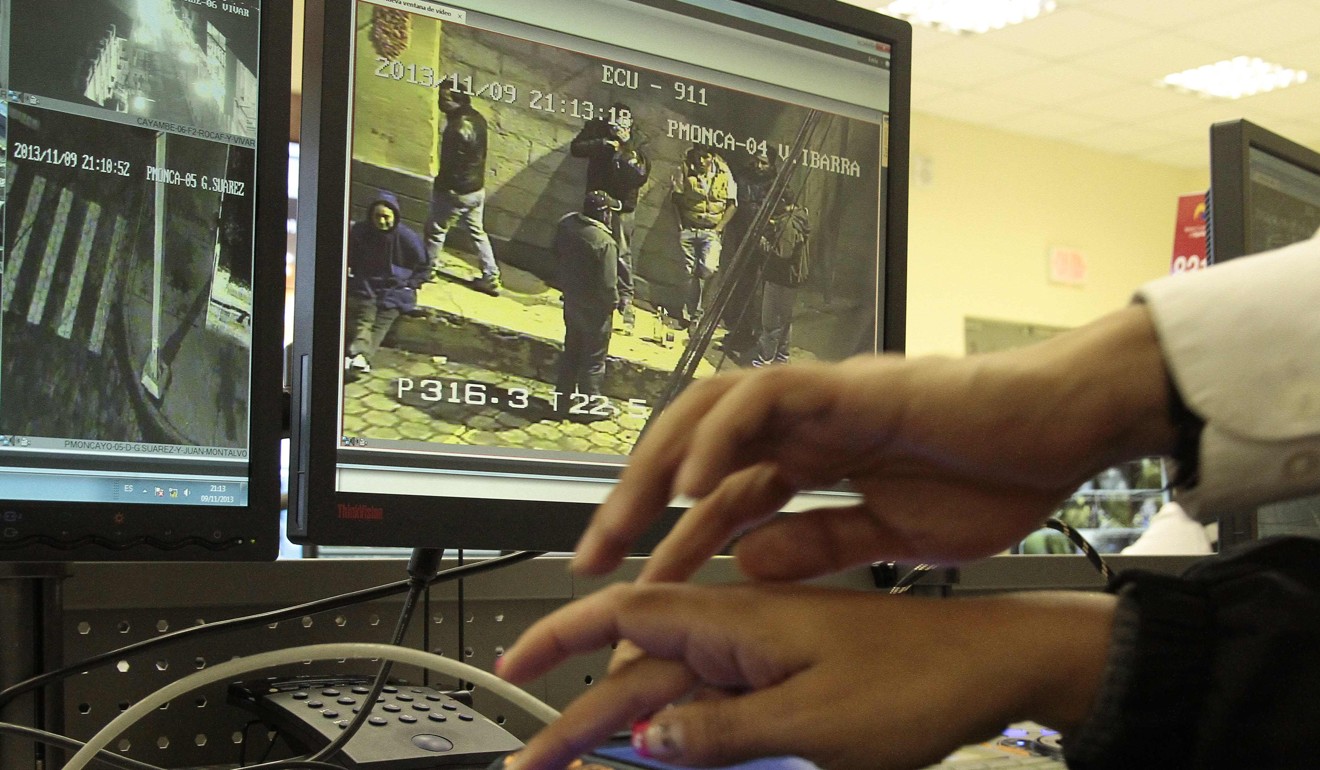
Ecuador is fighting crime using Chinese surveillance technology
South American country says network of security cameras has helped bring down the crime rate, according to Xinhua
Ecuador has introduced a security system using monitoring technology from China, including facial recognition, as it tries to bring down its crime rate and improve emergency management, according to state-run Xinhua news agency.
A network of cameras has been installed across the South American nation’s 24 provinces – keeping watch on its population of 16.4 million people – using a system known as the ECU911 Integrated Security Service, Xinhua reported.
Used by the country’s police, armed forces and fire brigade, it went into operation in November 2016 and has an emergency response and monitoring system.
“The hardware we have ... allows us to use facial recognition technology. We have already applied it in Cuenca and at the airports in Quito and Guayaquil,” Sixto Heras, deputy director of the service, was quoted by Xinhua as saying.
The system had helped to bring down the country’s crime rate, which dropped by 24 per cent since the cameras were installed, Heras said.
He added that Ecuador went from a ranking of 11th safest country in South America in 2010 to the fourth safest country in 2016.

China is the biggest buyer of crude oil from Ecuador, according to official Chinese data. In 2016, China exported US$2.23 billion of goods to Ecuador, while its imports from the country totalled US$940 million.
The ECU911 system is part of China’s push to expand its influence overseas. Ecuadorean President Rafael Correa in November 2016 announced that Beijing had donated US$14 million worth of new equipment for the security system, and two weeks later Chinese President Xi Jinping visited the country.
At the Laboratory for Comprehensive Security Systems – part of the ECU911 headquarters in Quito – experiments are being run to turn footage from Chinese surveillance cameras into data,
Juan Carlos Leon, director of technological innovation at the lab, told Xinhua.
A system to locate mobile phones has also been introduced.
“It’s a tool that lets you locate a mobile device and track it. That has been essential in rescues, and in identifying people who are lost or kidnapped,” Leon said. “This technology can improve police operations.”
He added that the technology had helped to solve thousands of cases.
State-owned China National Electronics Import and Export Corporation (CEIEC) was involved in setting up the laboratory. CEIEC is a subsidiary of China Electronics Corporation (CEC), one of the country’s largest defence contractors.
CEC’s reach extends far beyond China’s homeland security, and the system in Ecuador is not its first project in South America. In Brazil, CEC was involved in using Chinese technology to monitor environmental risks in the Amazon rainforest. But in Bolivia and Venezuela, as in Ecuador, its projects are to do with public security.
The BBC has reported that Chinese police need around seven minutes to track down a suspect once that person is exposed to the surveillance camera network. That has raised fears among dissidents, who told the BBC it would help the authorities silence anyone who did not agree with the ruling Communist Party.

